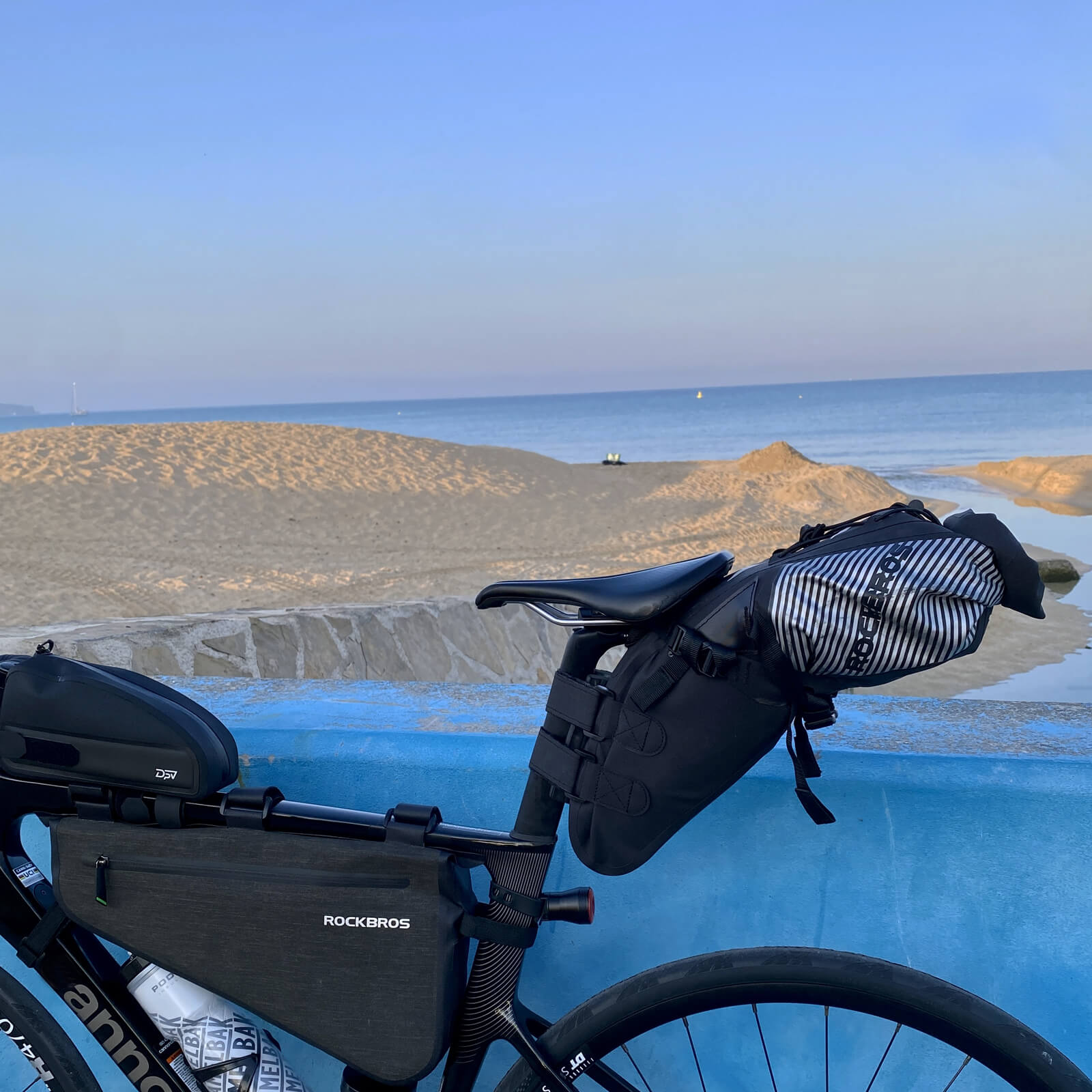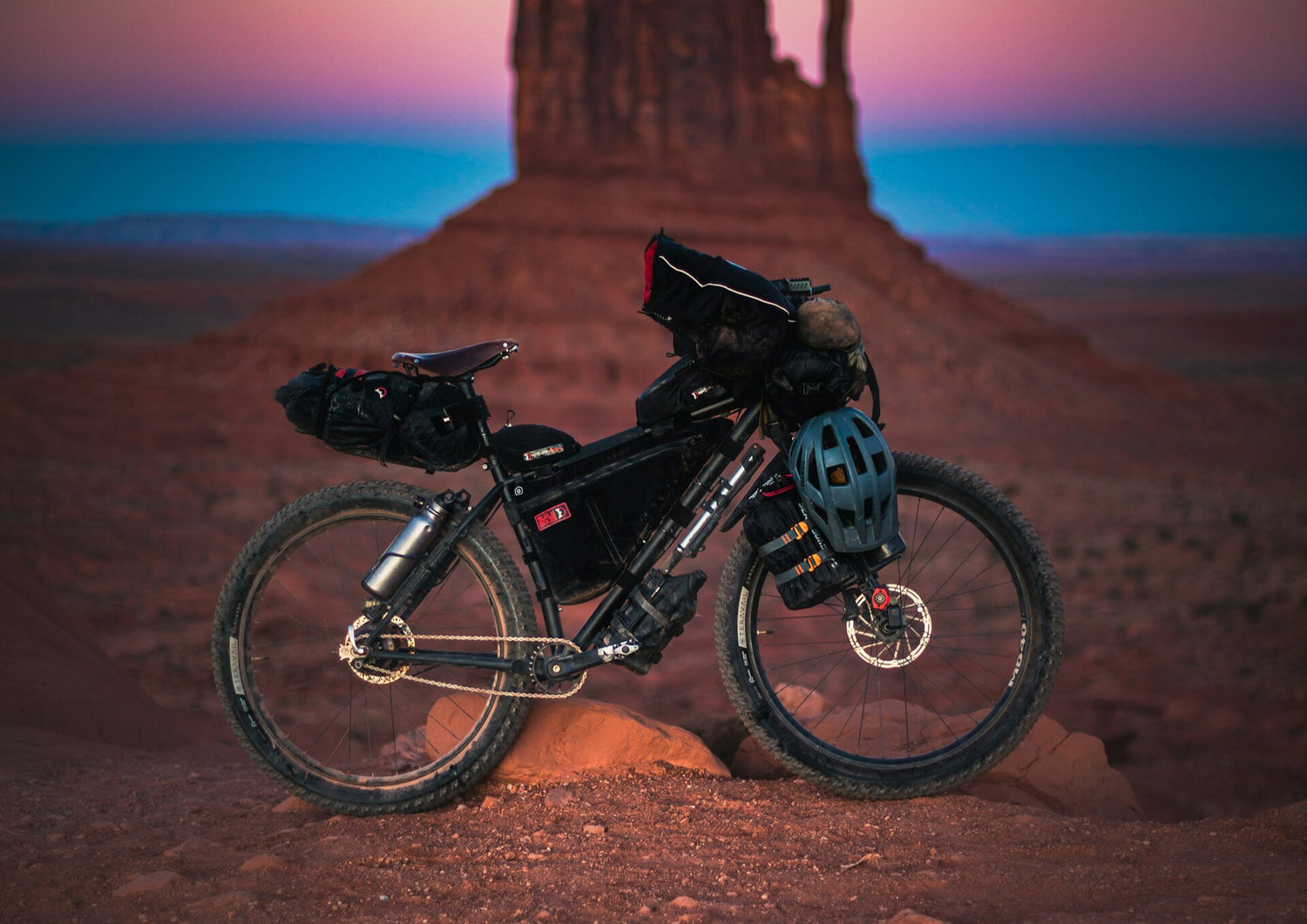Bikepacking is one of the most liberating ways to travel. You get to explore remote and rugged areas while carrying all the essentials with you. However, packing efficiently is the key to enjoying a smooth, hassle-free trip. In this guide, we’ll help you pack smart for your next bikepacking adventure and share tips on choosing the right gear to enhance your experience.
The key to packing for bikepacking is balance: you need to carry everything you’ll need without overloading yourself or your bike. The goal is to travel light while remaining fully prepared. Below, we'll break down how to pack based on your gear needs, storage, and essentials, with practical advice to ensure your trip is safe and enjoyable.
The Basics of Packing for Bikepacking
- Choose the Right Bags for Your Bike

Before you even start thinking about what to pack, you need to consider where you’ll store everything on your bike. Bikepacking bags are designed to fit different parts of your bike, allowing you to carry your gear in a way that keeps weight balanced and your ride comfortable.
- Handlebar Bags: Ideal for lightweight items like sleeping bags, clothes, or tents. Since these bags are on the front of your bike, try to avoid packing heavy items here to maintain steering control.
- Frame Bags: These fit within the main triangle of your bike frame and are perfect for heavier items such as tools, food, and electronics. Explore our selection of frame bags, designed for easy access and optimal weight distribution.
- Saddle Bags: These attach to the back of your seat and are perfect for clothing, sleeping gear, or anything that can be compressed. A good saddle bag can carry a surprising amount while keeping your bike balanced. Check out our saddle bags for lightweight, durable options that withstand rough terrain.
By choosing the right combination of bikepacking bags, you’ll have more than enough space to carry your essentials without overloading any single part of the bike.
- Pack Essential Tools and Spare Parts

Being self-sufficient on the road is critical when bikepacking, especially in remote areas. Always carry a small toolkit that can handle common repairs. Here are a few must-haves:
- Multi-tool with hex keys
- Tire levers and patch kit
- Spare inner tubes
- Chain link or chain breaker
- Mini pump
Consider the terrain and duration of your trip to determine what else you may need. For a more detailed list of tools, check out our full bikepacking tools guide.
- Organize Your Camping and Cooking Gear

If your bikepacking adventure includes overnight camping, packing light yet functional camping gear is key. Here’s what you’ll need:
- Sleeping Gear: Opt for a lightweight sleeping bag and a compact sleeping mat. A bivy sack or compact tent works well for bikepackers.
- Cooking Gear: A small stove, a compact pot, and a lightweight spork should cover your basic needs. You can also pack some dehydrated meals, which are perfect for bikepacking since they’re lightweight and calorie-dense.
- Clothing: Pack for Versatility

Australia’s climate can vary greatly depending on where and when you’re traveling. Packing versatile clothing that you can layer will ensure you're prepared for different conditions without overstuffing your bags.
- Base Layers: A good moisture-wicking base layer is essential for staying dry. Merino wool is a great choice as it’s lightweight and odor-resistant.
- Outer Layers: A lightweight rain jacket and a windproof shell are must-haves. Weather can change quickly, so always be prepared.
- Cycling Shorts: Padded cycling shorts will make long rides much more comfortable. Make sure they’re quick-drying, too.
- Accessories: Don’t forget to pack a good pair of gloves, a lightweight hat, and sun protection, as Australia’s sun can be harsh.
For more detailed clothing recommendations, visit our guide on clothes for bikepacking.
- Food and Hydration

One of the key challenges on any bikepacking trip is ensuring you have enough food and water, especially when traveling through remote areas. Here’s what to consider:
- Food: Pack energy-dense foods like trail mix, energy bars, and dehydrated meals. These foods are lightweight but packed with calories, which is exactly what you need after hours of cycling.
- Water: Water is crucial, especially when bikepacking in Australia. Carry enough water for the day and always have a way to filter or purify water on the go, such as a water filter or iodine tablets. Depending on your route, you may need to carry extra water, especially in the outback where sources can be scarce.
- Electronics and Navigation Tools

Staying on course and connected is crucial when exploring remote areas. Here’s a short list of electronics and gadgets to pack:
- GPS or smartphone with offline maps
- Power bank or solar charger
- Small bike lights for both front and rear
- Camera or GoPro (optional)
Remember, many remote areas in Australia may have limited or no cell service, so having a backup navigation option like a paper map is always wise.
Tips for Packing Efficiently
- Prioritize Essentials: Keep the heaviest items, such as water and tools, in your frame bag. Lightweight, bulkier items like sleeping bags and clothing should go in your handlebar or saddle bags.
- Use Compression Bags: Compression bags help you squeeze more into less space, especially when it comes to clothing and sleeping gear.
- Test Pack: Before your trip, pack your bags and go for a test ride to ensure everything is well-balanced and secure. You don’t want to find out mid-trip that your saddle bag keeps swaying or that you can’t easily reach your water bottle.
Final Thoughts: Pack Smart, Travel Light
Packing for bikepacking can seem overwhelming, but with the right approach, you can streamline your gear without sacrificing comfort or safety. Every item should serve a purpose, and the right bikepacking bags can help you organize it all efficiently. Always plan ahead based on your specific route and conditions, and remember, packing light is key to a successful and enjoyable adventure.







Leave a comment
This site is protected by hCaptcha and the hCaptcha Privacy Policy and Terms of Service apply.